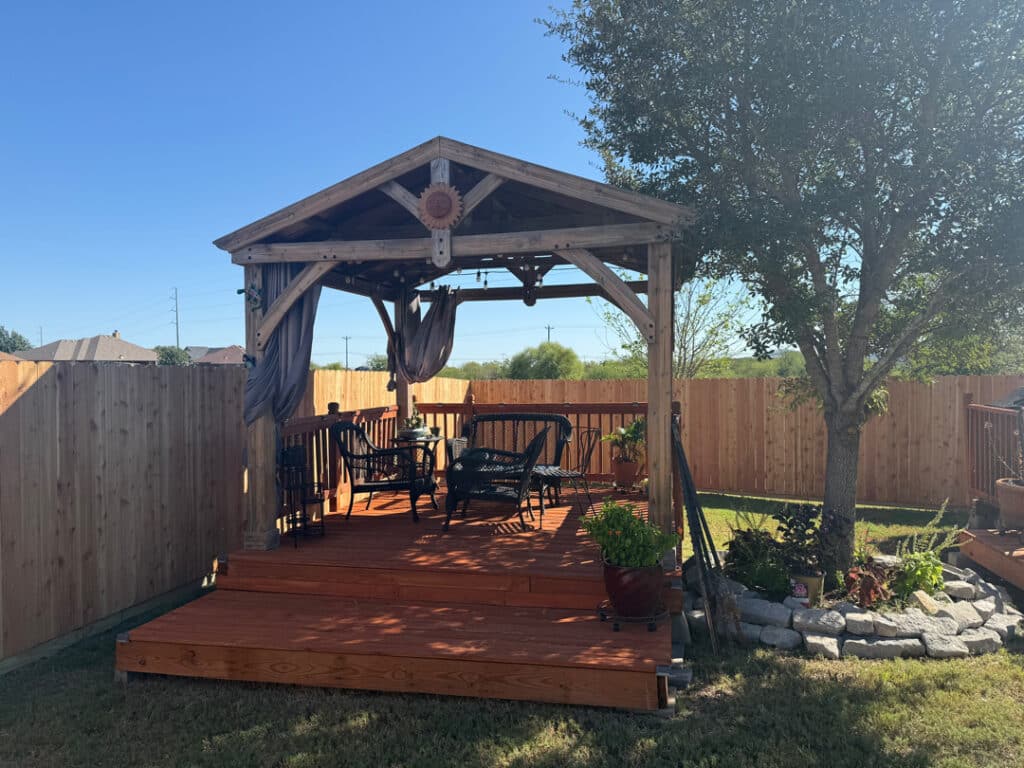
Why Fence Staining & Maintenance Matters
Morriss Fence strongly advocates for the staining and sealing of your fencing project. It is advisable to consult with a team member regarding this option. The weather conditions in Texas can pose significant challenges, and the impact on your fence should not be underestimated. Given the high temperatures and substantial temperature fluctuations, your fence is subject to considerable wear and tear throughout the year. Staining not only mitigates the aging process but also enhances the aesthetic appeal of the fence when the appropriate stain is selected.
Benefits of Staining & Maintaining Your Fence
The practice of staining a fence is essential for its maintenance and longevity. A fence contributes to the overall aesthetic value of a property while also functioning as an effective boundary and protective barrier. Over time, exposure to diverse weather conditions and environmental elements can lead to deterioration, color fading, or even rot. Regularly staining the fence serves to safeguard it from these detrimental effects, preserving its vibrancy and extending its lifespan.
How Frequently Does a Fence Need Maintenance?
Determining the appropriate frequency for staining a fence is crucial. Understanding the factors that influence the necessity for staining will ensure optimal care and maintenance. A Morriss team member will help you explore these factors and provide recommendations for the frequency of staining based on various types of fence materials.
Our Recommendations
Consistent maintenance, including staining wood fences every 2 to 3 years, provides protection against weathering, moisture, and UV damage, thereby preserving both their natural beauty and structural integrity over time.



